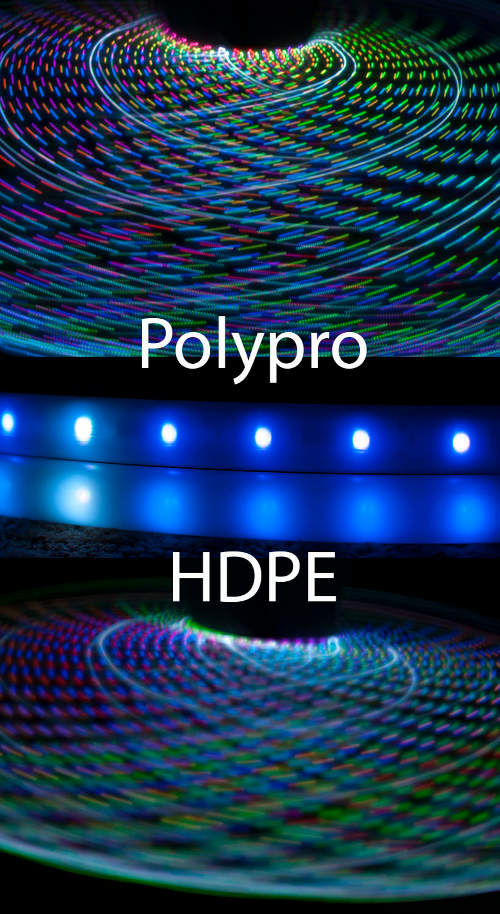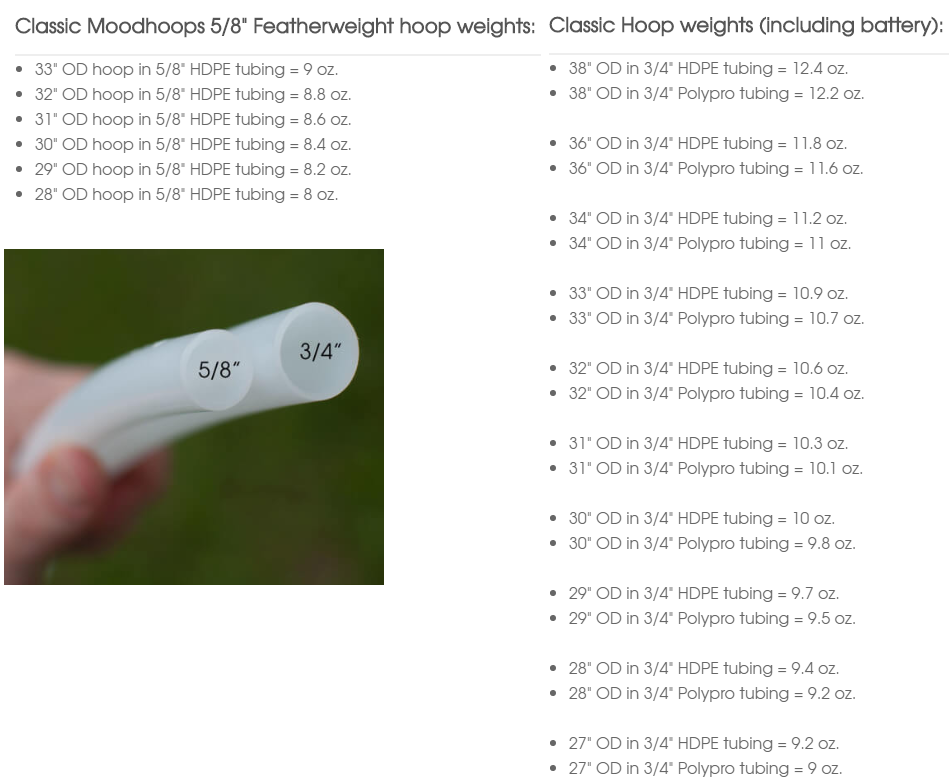Polypro vs HDPE Tubing
Should I choose HDPE or Polypro?
How Can We Help?

Check out the chart below to see weight differences between HDPE and polypro tubing
Regarding whether choosing polypro tubing changes the weight of the hoop, it does, but not by very much. You can see in the 3/4″ weights chart that the difference between the HDPE and polypro option is pretty small. And with the volume of the 5/8″ tubing, battery, and components of the hoop also being less than a 3/4″ hoop, the weight difference between the HDPE and polypro option is even less noticeable. When it comes to the difference of feel with a polypro hoop, there’s different ways people seem to describe it in comparison to HDPE. Some hoopers find polypro to be stiffer, while others find it to be more flexible.
The thickness of the tubing also affects the feel of both hoop polypro and HDPE hoops. With any 5/8″ hoop you’ll find that it’s more flexible than 3/4″ tubing. So in addition to the weight of the hoop it’s good to think about what kind of hooping style you’d like to use with the hoop. 3/4″ tubing is better for faster, more aggressive moves, while 5/8″ has a little more give you it. The same moves in a 5/8″ hoop you’d want to soften in 5/8″ so as not to warp the shape, or potentially kink the hoop.
With any polypro hoop through it’s important to remember that polypro tubing is known to be more brittle than HDPE, especially in cold weather and lower temperatures. The tubing is more clear, so the lights will shine through more crisply, as the HDPE has a subtle diffusing effect. But the HDPE is a more resilient tubing overall, and the light diffusion is still very pretty 🙂 There’s high points for each tubing type, but we still recommend HDPE as the default option for LED hoops, and polypro as a wonderful option for polypro day hoops 🙂
Hopefully this helps to shine a light on the differences between polypro and HDPE tubing 🙂
